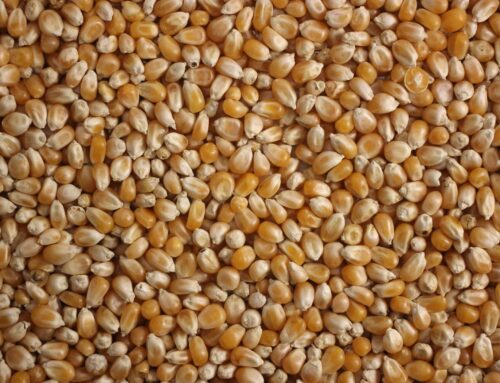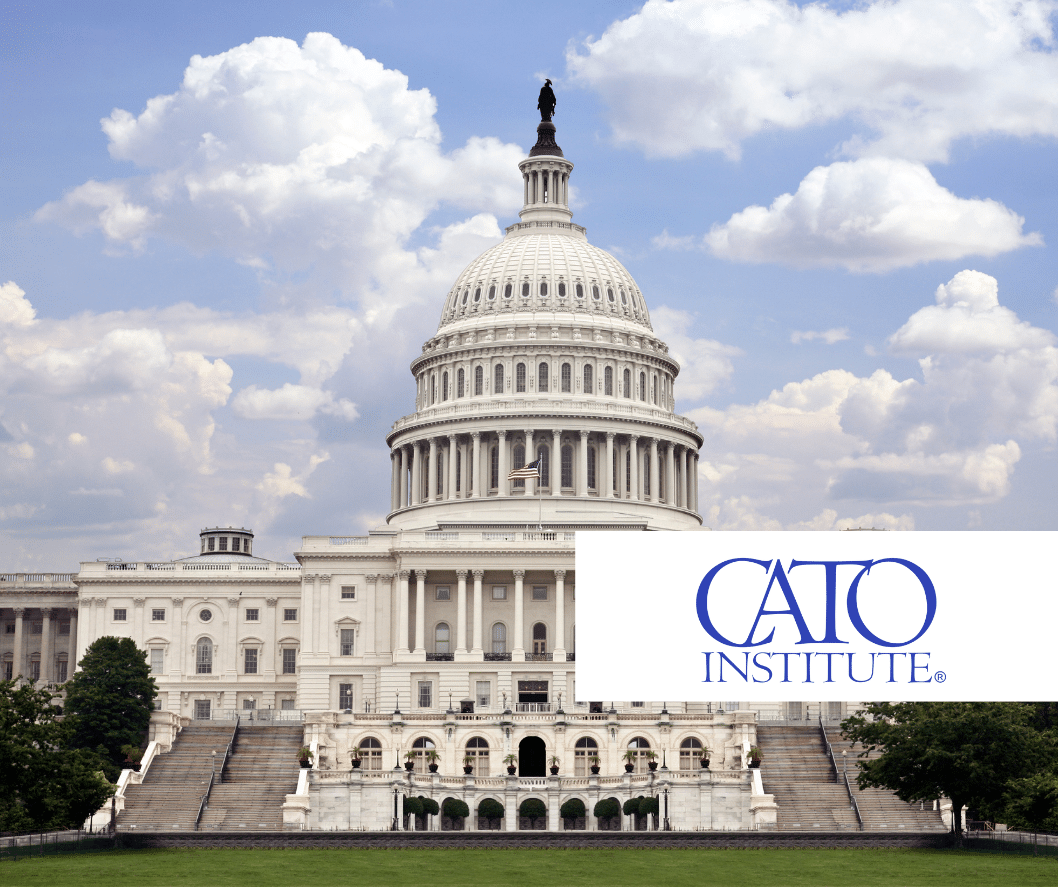View/Download this article in PDF format.
All federal agricultural programs – including conservation programs – should prove that they are achieving measurable outcomes that provide public benefits and reduce downstream costs of agricultural pollution. Especially in this fiscal environment, taxpayer dollars should be prioritized toward conservation programs with the best return on investment. Some conservation programs already limit long-term liabilities by reducing soil erosion, improving soil and water resources for recreational and industrial purposes, lowering water treatment costs, limiting flooding risks and damages to roadways, and enhancing wildlife habitat. But more can be done to save taxpayer dollars and improve program outcomes. By employing targeting, prioritization, better monitoring technology, and additional measurement and analysis techniques, taxpayer dollars can more efficiently achieve the best outcomes and reduce long-term liabilities. Even if existing conservation programs are achieving measurable outcomes, more must be done to document lessons learned and how best practices can be applied to other regions.
Principles of Effective Conservation Programs
To achieve measurable outcomes, agricultural conservation programs must be structured to achieve the greatest return on investment. Programs should meet the following three common sense principles: (1) cost-effectiveness, (2) targeting to areas of most need, and (3) additionality. Cost-effectiveness ensures that taxpayer dollars are prioritized to meet certain objectives in the most efficient manner. Utilizing benefit-cost ratios (that also capture nonmarket benefits), competitive bidding, and environmental indices can ensure that taxpayer dollars are spent wisely. Targeting funding to areas most in need ensures that areas prone to soil and wind erosion or agricultural runoff (like highly erodible land, wetlands, regions with imperiled species, or other sensitive land) are prioritized over enrolling land with less public benefits. Prioritizing funding based on national interest, with input from state and local groups and governments, can be more cost-effective than ensuring that each state receives a minimum amount of funding. Finally, additionality ensures that taxpayers are only paying for additional conservation practices – not simply subsidizing practices that agribusinesses would have implemented on their own.
Examples of Conservation Programs with Estimated Benefits
Most conservation programs have produced public benefits over time but due to a lack of on-the-ground information and analysis capabilities, benefits have only been reported as estimates. Some taxpayer dollars could have been spent more effectively if they were targeted and prioritized. Working lands programs that pay producers to implement conservation practices on land currently in production have resulted in some benefits but taxpayer dollars could have been saved if existing practices were not paid for in the Conservation Stewardship Program (CSP). Additional dollars could have been saved if the Environmental Quality Incentives Program (EQIP) did not remove competitive bidding and prioritization in 2002 and if 60 percent of funding wasn’t mandated to be used to cover a routine and inevitable cost of doing business – cleaning up livestock waste.
Other conservation programs that have resulted in public benefits include those that set-aside sensitive land or wetlands for conservation purposes, like the Wetlands Reserve Program (WRP) and the Conservation Reserve Program (CRP). USDA estimates that WRP has consistently provided taxpayers with $2 back in both market and nonmarket benefits for every $1 of investment. Together with a 1985 provision stating that to remain eligible for taxpayer subsidies agribusinesses mustn’t drain wetlands, WRP helped the country, for the first time in decades, realize a net gain in wetlands from 1997 to 2007.
USDA estimates that in 2010, CRP resulted in a reduction of 220 million tons of sediment, 607 million pounds of nitrogen, 122 million pounds of phosphorus, and 44 million metric tons of carbon. This translates into $3.5 billion in market and nonmarket benefits, or $2 back for every $1 invested. Targeting CRP funding to areas with more needs resulted in an 80 percent increase in freshwater recreation, wildlife viewing, and pheasant hunting benefits per year. However, more benefits could be achieved from these programs if funding was further prioritized and regional differences were taken into account, for instance, when calculating the impact of conservation practices on soil and water quality.
Examples of Targeted Conservation Programs with Measurable Outcomes
Some newer conservation initiatives do a better job of prioritizing taxpayer dollars and reporting outcomes than others introduced decades ago. Examples of programs striving to meet policy goals and achieve measurable outcomes include the Conservation Reserve Enhancement Program (CREP), Cooperative Conservation Partnership Initiative (CCPI), and Mississippi River Basin Initiative (MRBI). While not perfect, these programs have solid foundations in place to quantify the tangible benefits taxpayers receive.
Conservation Reserve Enhancement Program (CREP): CREP, a subset of the nearly 30-year old CRP, strives to improve soil and water quality in high-priority regions by enrolling stream buffers, filter strips, and wetlands in ten- to 15-year contracts. CREP is a joint federal-state program with 43 agreements in 32 states ranging from Maryland’s Chesapeake Bay and Florida’s Everglades to Nebraska’s Platte-Republican Resources Area. States or local groups provide monitoring resources and 20 percent of conservation funding whereas federal funding makes up the remaining 80 percent. While projects like those in Ohio’s Scioto River Watershed are estimated to “remove an average of 23,711 tons of sediment, 36,499 tons of phosphorus, and 72,914 tons of nitrogen [per year],” on-the-ground information should also be rolled up to the national level. Thankfully, most projects establish specific goals at the outset which provides a solid foundation to then measure soil and water quality benefits in the future. NE-CREP plans to reduce the use of irrigation by 125,000 acre-feet annually, increase surface and groundwater retention by 85,000 acre-feet annually, provide up to 85,000 acres of native grassland habitat, and increase bird populations by 25 percent.
Cooperative Conservation Partnership Initiative (CCPI): CCPI uses measures and metrics to determine the effectiveness of conservation programs in targeted watersheds. Ninety percent of funds are reserved for projects chosen by state USDA officials in consultation with state-based conservation committees while the remaining funding is prioritized to watersheds of national interest. CCPI uses six percent of existing funds or available acres from EQIP, CSP, and the Wildlife Habitat Incentive Program (WHIP) to enroll sensitive, private farmland acres in conservation practices. A special CCPI program also exists to clean up the Chesapeake Bay.
Mississippi River Basin Initiative (MRBI): MRBI focuses on gaining quantitative information on the effectiveness of conservation practices in USDA’s highest priority watershed – the Mississippi River Basin. MRBI aims to reduce nitrogen fertilizer runoff from entering and polluting water supplies in the Gulf of Mexico since algae feeding off excessive nitrogen cut off oxygen to marine life, resulting in lost revenue for fisheries and recreational water users. The use of specific practices including cover cropping, residue and tillage management, crop rotations, and better fertilizer and chemical management are funded via several existing conservation programs – EQIP, WHIP, CSP, WRP, CCPI, and Conservation Innovation Grants (CIG). Positive outcomes of MRBI are listed in the following section.
Measuring and Analyzing Program Outcomes
In order to adequately measure and analyze program outcomes, a baseline must first be established. Progress cannot be measured if prior soil and water conditions are unknown. This helps ensure that conservation activities are resulting in real and meaningful soil and water benefits. Administrators must also establish temporal, spatial, and other important measurement details. In other words, the following questions must be answered before an assessment takes place: which areas are of most concern, under which timeframe conservation practices be evaluated, and how detailed measurements will be (will estimates or averages be used to determine conservation progress)? Then, funding must be available for local officials to monitor progress of soil and water quality at the field- and/or watershed-level. Lists and specific locations of taxpayer-funded projects, raw data, and program outcomes —successes, failures, modifications—should also be publicly available to enable better information sharing and allow policymakers to evaluate program effectiveness. Anecdotes do not cut it. Quantitative information depicting on-the-ground results is necessary to evaluate overall program outcomes.
Conservation Effects Assessment Project (CEAP): USDA is attempting to measure conservation program outcomes with a series of national, regional, and watershed-specific reports under the new CEAP. “CEAP is a multi-agency effort to quantify the environmental effects of conservation practices and programs [via research, modeling, assessment, monitoring and data collection, outreach, and extension education] and develop the science base for managing the agricultural landscape for environmental quality… Project findings will be used to guide USDA conservation policy and program development and help conservationists, farmers and ranchers make more informed conservation decisions.” While useful, CEAP-like assessments could be improved by establishing more accurate baselines, employing better monitoring technology across wider areas, documenting actual water and soil quality changes instead of estimates, expediting program assessments, and consolidating conservation outcomes into regional and national assessments. USDA has already acknowledged some of these lessons learned, in addition to identifying sources of pollutants and prioritizing conservation practices that will not only address “pollutants of concern but that also will be adopted and maintained on the landscape.”
So far, 13 major CEAP assessments have been completed (out of 42 watershed studies initiated) but only five reports – for the Upper Mississippi River, Ohio-Tennessee River, Missouri River, Great Lakes Water Resource Region, and Chesapeake Bay – have been released. According to USDA, “Six of the 13 projects – the Walnut Creek Watershed in IA, the Paradise Creek Watershed in ID, the Central Platte Natural Resources District in NE, the Cannonsville Reservoir in NY, Rock Creek in OH, and Spring Creek in PA – were able to demonstrate water quality changes but none met their water quality targets.”
Examples of positive outcomes from targeted conservation programs include:
- A statistically significant decrease in groundwater nitrogen levels was documented in NE, but concentrations still exceeded drinking water standards.
- In the Great Lakes Region, conservation practices reduced sediment loads by 50 percent, nitrogen loads by 37 percent, and phosphorus levels by 36 percent.
- In the Upper MS River Basin, field-level simulations found that wind erosion dropped by 64 percent, nitrogen surface runoff fell by 45 percent, phosphorus runoff decreased by 44 percent, pesticides entering water supplies dropped by at least 35 percent, and farmland acres gaining soil organic carbon increased by 16 percentage points.
However, note that these reports do not always take into account conservation practices that agribusinesses would have employed on their own (without taxpayer dollars) so some benefits may be overstated since they cannot be directly attributed to federal conservation funding. CEAP reports also assume that agribusinesses continue practices initiated at the beginning of the study period. Finally, since assessment periods ended before the huge increase in commodity prices in 2007, some positive outcomes may have been zeroed out by an increase in corn acreage and subsequent increases in chemical and fertilizer use but less utilization of cover crops, crop rotations, and other conservation practices. Better monitoring and reporting, in addition to more targeted conservation funding, should be utilized to improve water quality in areas of highest priority.
Recommendations
To achieve the greatest positive outcomes from conservation programs, federal funding must be accountable and transparent to taxpayers and the public. It must be targeted to areas of greatest need, tailored for and responsive to on-the-ground needs, and spent on the most cost-effective practices. Agricultural conservation programs could greatly benefit from improvements ranging from more accurate baselines and better monitoring to better correlating pollutants of concern with specific practices to reduce chemical and fertilizer runoff. Because agricultural producers will be the ones implementing, and directly benefiting from, conservation practices on the ground, they should help set goals and measure conservation outcomes. If producers live on their land and plan to continue farming, they have an inherent profit motivation to ensure that soil productivity improves or is maintained over time. Combined with better structured and targeted conservation programs, these reforms will help achieve cost-effective, measurable outcomes that save costs for not only agribusinesses and communities, but taxpayers as well.
For more information, visit www.taxpayer.net, or contact Joshua Sewell, josh at taxpayer.net.










